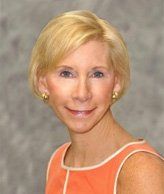Is There a Shortage of Oncologists?
With some analyses warning of an impending oncologist shortage, are we truly approaching a point of critical need? Are practice extenders such as advanced practitioners the best solution to fill that gap or are there other options?
Rebecca Bechhold, MD

A healthcare writer recently called for the use of advanced practitioners to help ease the “critical need” for providers of oncology services. In 2007, an analysis of supply and demand for oncology services concluded that demand is projected to rise about 48% by 2020 as the population ages and grows and new treatments emerge. Simultaneously, the services oncologists can provide is expected to grow only by about 14% based on aging, burnout, and practice patterns.
My practice spans 30-plus years in rural, urban, and suburban areas. Oncologists are some of the smartest and hardest workers of any medical specialty. Our patients are all sick, some close to death, and require exquisite care 24/7/365; hence, we have a brutal call schedule. In the early years before the shift to outpatient treatment and better supportive care, we routinely received patient calls every 10 to 15 minutes over the 48-plus hours of the weekend. The answering service would frequently call with multiple calls at once. We would round on 20 to 30 patients a day at 3 or 4 hospitals. This has improved considerably, since there is now better symptom control that lasts through the week and offices are now open on weekends with advanced practitioners and physician staffing.
With patient satisfaction scoring, electronic medical records, and productivity tracking, we have only added to the stress of daily practice, which is true not just for oncology, but for every medical discipline. If a doc is late for a patient because the previous patient had an unforeseen crisis, the unhappy patient may score them poorly on their visit evaluation, which may prompt a talk with a practice manager. Feeling rushed may lead to incomplete records and billing. Obviously, we are motivated by more than our salary.
But as busy as many oncologists are, they do not want to lower their lucrative patient volume by losing them to new doctors; hence, the use of nurse practitioners and physician assistants. But is that really helping provide more services, or is it just churning out more visits? The places where I have practiced that could benefit from an advanced care provider do not attract them any more than they attract medical oncologists. Rural areas are underserved in a variety of specialties because neither advanced practice providers nor doctors want to live there or spend excessive amounts of time commuting to remote areas. I have spent two phases of my career traveling to underserved areas-one was 2 hours each way and the more recent one was 90 minutes on one of the most accident-prone highways in the country. It is not a pleasant lifestyle.
One writer indicated that people are willing to drive for medical care if it is within their “normal activity space.” My experience in poverty-stricken regions is that 5 to 15 miles away encompasses this activity space and that often depends on Medicaid-supplied transportation, or friends or family that have a working vehicle. Driving to the next city 40 to 70 miles away is not a legitimate option and certainly not viable for repeated visits.
In the city environment, all oncologists in a given practice will say that they are too busy. But how many are willing to share the new consults? They plead exhaustion, but do not want to see a reduction in income. The practice of oncology has shifted and payment models have changed. Don’t we need to change how we deliver care as well?
One of the obstacles to using practice extenders in oncology is the long training time and need for MD supervision during practice. Is there a role here for part-time, semi-retired oncologists to help with this? When I was working to capacity, the last thing I wanted was a med student or resident to slow me down, but what if there was a board-certified oncologist who wasn’t concerned with “productivity” to help see patients or supervise a nurse practitioner or physician assistant? Would that ease the burden on the rest of the practice, keep patients moving on time, and not sacrifice level of care?
What if that same oncologist was available to doctors in underserved regions for telemedicine consultation? Several times a month, new patients would not show up to appointments because they were so debilitated by end-stage cancer at the time of diagnosis, the family could not transport them. Sometimes the family would come in to talk and ask questions, but that could be done remotely. They just wanted to know an oncologist had looked at the records, pathology, and imaging. There are even patients who come in and state from the beginning that they are not interested in any treatment. Again, remote consultation would be useful.
I am unsure if we truly have or will have a shortage of oncologists. I firmly believe we need to utilize our resources better and think creatively about part-time doctors training nurse practitioners and physician assistants to reach out to underserved areas that are not going to attract specialists.
Surely, across the United States, some regions have probably found ways to address this issue and I would love to hear about them. Admittedly, my perspective is limited but I am hopeful that physicians will find means, both personal and technological, to extend excellent care beyond our current reach.
Newsletter
Stay up to date on recent advances in the multidisciplinary approach to cancer.
Elevating the Quality of Cancer Care via Cross-Department Collaboration
Experts from Sibley Memorial Hospital discuss how multidisciplinary work has enhanced outcomes such as survival and resource use at their institution.